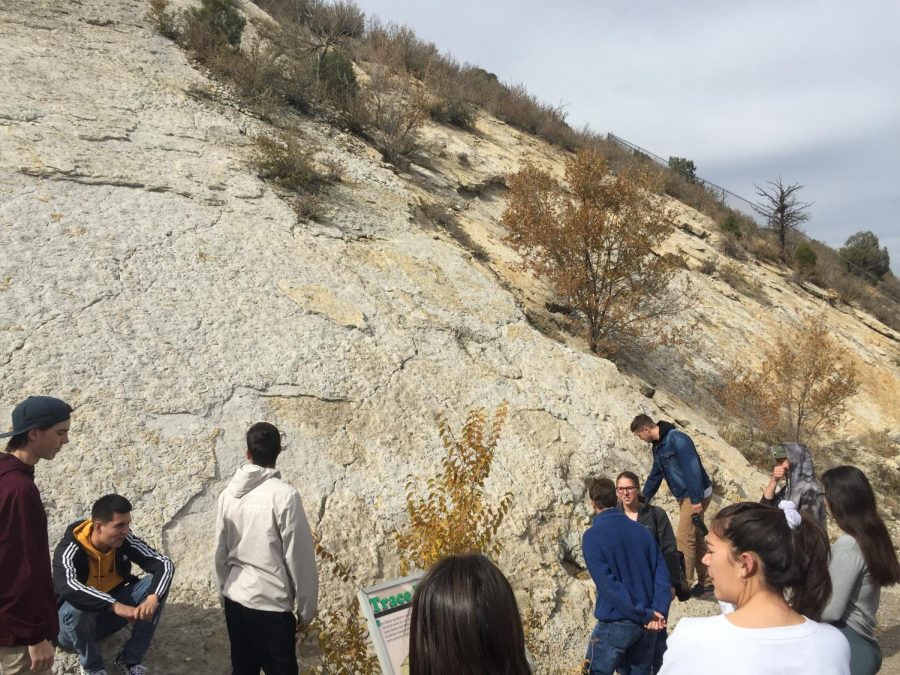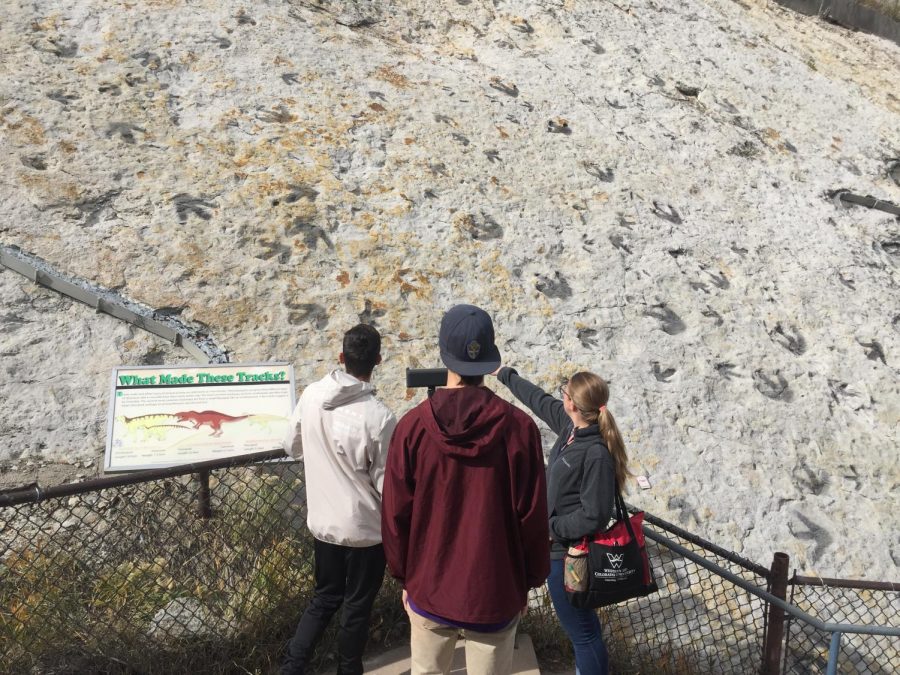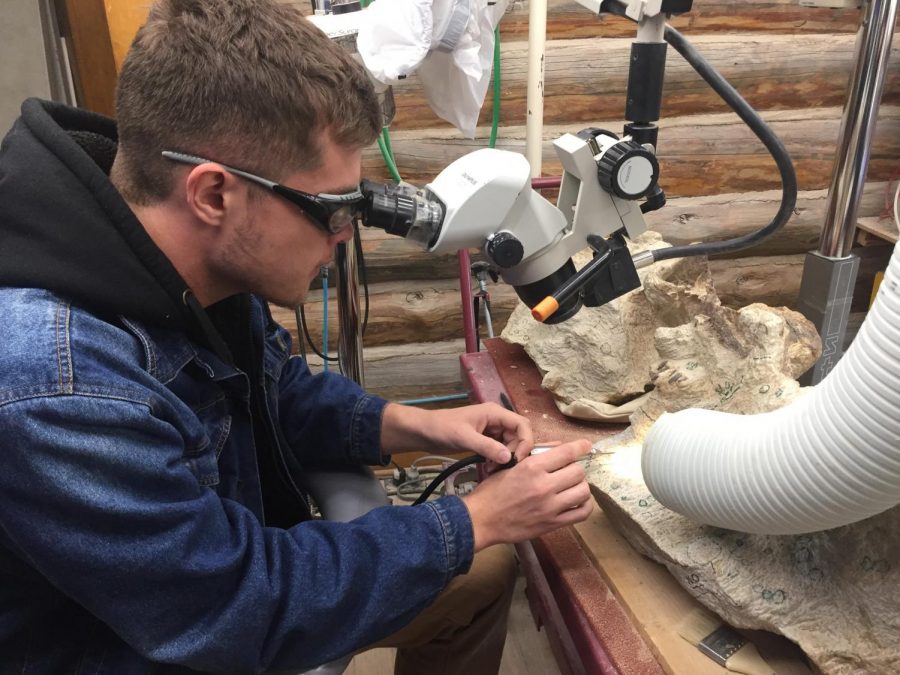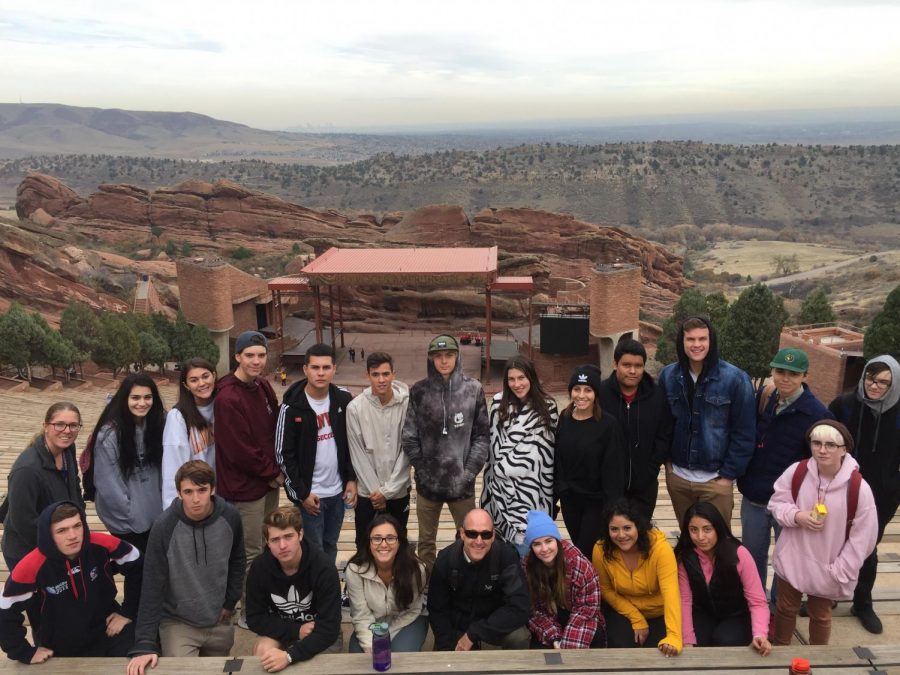BHS Geology Hits the Rocks
BHS Geology students gather for lunch at Red Rocks Amphitheater to study the geology of the amphitheater comprised of a 300 million year old rock formation (fountain formation) that has been uplifted from depths as deep as 10,000 feet below.
BHS geology students have been studying the front range geology and how items like the flat-irons, red rocks and other formations were created and what the geology reveals about the past history of Colorado (once an ocean, once a desert, once a jungle, once lush grassland and once river bed).
We first visited the Morrison Museum of Natural History and studied what sort of Dinosaurs lived in the Morrison area, we visited red rocks and observed many geological formations and saw how it was uplifted from far below (Red Rocks formation goes approximately 10,000 feet below the city of Denver).
We then observed the geology of the Morrison and Dakota formations that make up Dinosaur Ridge and looked at the ripple marks in the rock indicating a river environment at that time. And of course we saw Dinosaur tracks as well.
This trip is a precursor to our rocks unit we will start soon.





